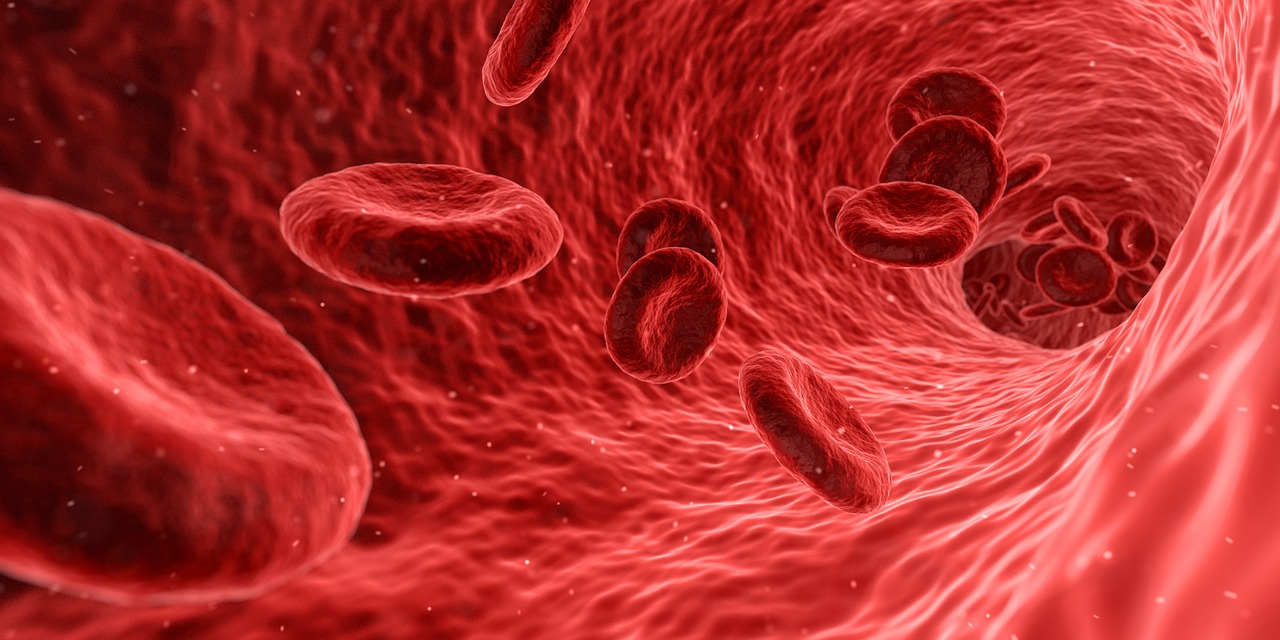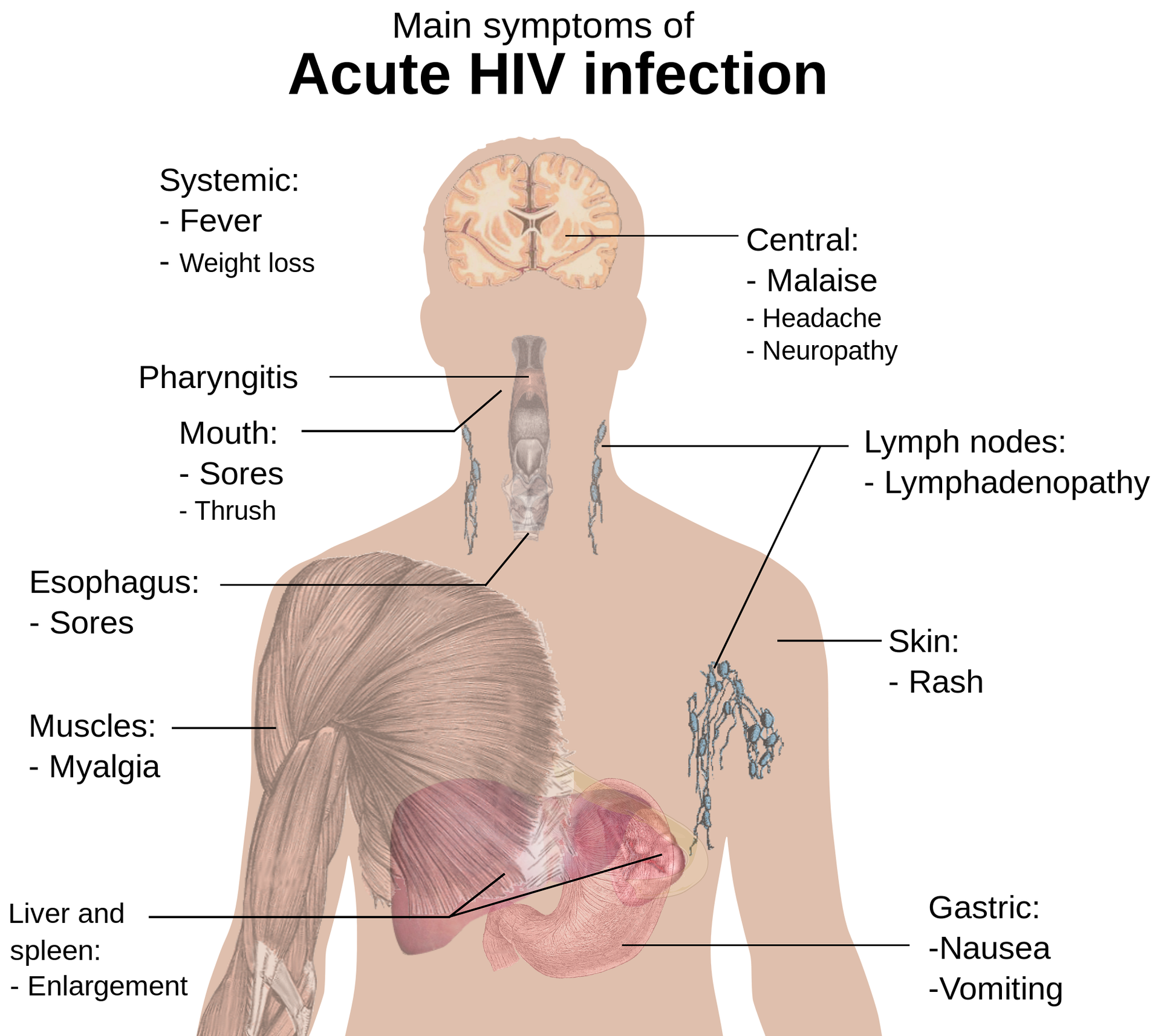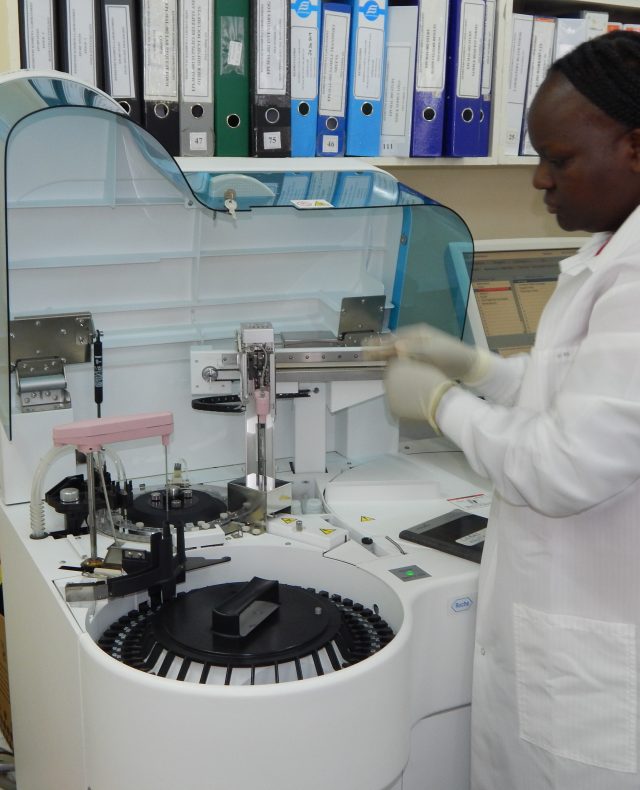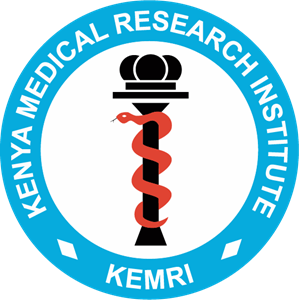Infectious and Parasitic Diseases
About IPD Program
Infectious and parasitic diseases are not only a matter that threatens the lives of individuals in developing countries but also pose a serious impediment to the social and economic development of these countries. Infectious and parasitic diseases take a particularly heavy toll on the poor. The risk of infection in developing countries is heightened by the high rate of population growth, poverty, gender disparities, fragile healthcare and medical systems, inadequate preventive, care and treatment services, lack of safe water supply, malnutrition, etc. Poor health in turn aggravates poverty. There is therefore a pressing need to break such vicious cycle of poor health and poverty. Fighting Infectious and parasitic diseases should be a central part of the development programs of developing countries, particularly in the efforts of poverty reduction.
Mandate of IPD Program
To this end and out of this need KEMRI developed the Infectious and Parasitic Diseases Research Programme. The programme is conducted with the aim of developing tools and technologies for the reduction of disease burden due to infectious and parasitic agents. In this regard, research is conducted on vector control, bacterial, fungal and viral infections such as HIV/AIDS,TB, Ebola, Malaria, Chikugunya, Dengue Fever and other Neglected Tropical Disease like Kala azar and Bilharzia among others.Out of 1.6 million people living with HIV Virus in Kenya, 900,000 are on Anti-retroviral – ARVs treatment. Although ARV’s have reduced AIDS – related morbidity and mortality, they have resulted in HIV – 1 drug resistance and emergence of new strains whose virulence is yet to be established. The Center for Virus Research laboratory has identified new and evolving HIV genotypes in Kenya including the very rare subtype O, HIV -2 and a myriad of recombinants.
Unlike other viruses, the AIDS virus is highly evolving with a very high turnover rate of its genome. It is therefore critical to monitor the evolution of the HIV virus infecting the population to determine the prevalent genotypes and its impact especially on existing diagnostic and screening systems and antiretroviral. Through the research centers in Busia and Nairobi, KEMRI has established the first ever HIV genotyping program in the country. Perhaps the greatest clinical impact of KEMRI has been its contribution to HIV drug resistance testing in Kenya. Information from this study is expected to assist in the designing of a vaccine as well as help in making decisions on the change of treatment regimen among others.
Similarly, in order to better understand how the body responds during the critical moments of early HIV infection, the Kericho site of KEMRI is also participating in an innovative study focusing on the earliest stages of HIV infection to help understand what is needed to create an effective HIV vaccine. The interventions used include very early broadly neutralizing antibodies which are substances produced by the body to fight infections using the state of the art laboratories certified by the esteemed Collage of American Pathologists (CAP), the study continues to monitor the progress of two babies and six adults who are apparently doing well.KEMRI and Nagasaki University Institute of Tropical Medicine – NUITM jointly established a bacteriology department that has been involved in a hospital based surveillance of diarrhoea and septicemia. The study being carried out at Kiambu County Hospital in Central Province and Mbita Sub-county hospital in Western Kenya seeks to determine factors that influence severe diarrhoea among children below 5 years of age whereas surveillance for septicemia was for all age groups.
After almost seven years, scientist at KEMRI have been able to clarify the burden of rotavirus and enteric bacterial pathogens among children below 5 years in Kiambu and Mbita. In the process, the research team has also been able to isolate new and unusual strains of rotavirus in the country. The assessment of the impact of the newly introduced rotavirus vaccine in the country has also been completed.
This study is being conducted because the stomach environment in relation to HIV and AIDS has not been properly studied yet the virus causes a decrease in the stomach’s ability to safeguard itself. This therefore allows for microbial translocation and infectious agents that could have been controlled by the mucosal barrier to cause disease. One of the major findings of the study is that the presence of infectious agents in the stomach induces chronic systemic immune activation.
The Centre for Infectious and Parasitic Diseases Control Research has for a long time been the main site for superficial fungal infection research in the context of human immunodeficiency virus – HIV in Western Kenya. Here, a study by KEMRI in the spectrum of superficial fungal infection is being undertaken at an outpatient clinic in Busia. The study has found that tinea as the most prevalent superficial and opportunistic infection in HIV patients in the area. It was therefore established that antifungal susceptibility testing plays an important role in managing and guiding treatment decisions.


The Centre for Virus Research which is one of the oldest centres at the Kenya Medical Research Institute has seven laboratories and located at the headquarters of KEMRI as well as its research campuses within Kenyatta National Hospital compound. The Centre also has several clinical research sites in Western Kenya, the Rift Valley and Coastal Regions of the country with laboratories that handle overall research component among them:Arboviruses and Hemorrhagic Fevers Unit.
Influenza and other Respiratory Viral Diseases Unit
Viral Diarrhea Unit
Viral Hepatitis Unit
EPI Disease
HIV and AIDS and
Human Papilloma Virus
Since its inception 37 years ago the centre has made great strides and achievements in terms of developing laboratory and human resource capacity which has placed it among the best in the world. The laboratory Projects have been investigating on:
Specialization on molecular aspects of microbial infectious and epidemiology. This unit is a part of the Consortium for Pathogen Ecology and Epidemiology – (CoPEEG) that was formed in 2017
Molecular Epidemiology of Urinary Tract Infectious (UTI) pathogens which generally form the most resistant populations of any infectious bacteria.
CoPEEG unit is now a part of the initiative known as Holistic Approach Towards Unravelling Antibiotic Resistance in East Africa – HATUA.
The unit was the core facility that supported diagnosis and molecular analysis of viral cholera strains implicated in multiple outbreaks in 2017 in Nairobi
Neglected Tropical Diseases are the most dilapidating ailments that pose socio-economic challenges to the affected families and communities at large. Since they are chronic in nature they impoverish families and they are not small in number anyway. They manifest themselves in the form of viruses, bacteria as well as parasites, and they include infections such as leishmaniasis, leprosy, buruli, ulcers, dengue fever, tuberculosis and many more.
In this regard, KEMRI’s Infectious and Parasitic Diseases Research Programme has been conducting research on the best strategies to deal with some of them. For instance the Neglected Tropical Diseases Unit has brought together different researchers working on disease specific issues .Their research work in Western Kenya has focused mainly on schistosomiasis and soil transmitted helminths.
Eastern and Southern Africa Centre for International Parasite Control-ESACIPAC, is yet another platform for exchanging information on prevention and control of parasitic diseases .Being a regional consultative gathering of scientists on how to combat parasitic diseases within their respective countries a lot takes place in terms of information sharing at the periodic conferences of ESACIPACParasitic infections continue to be of major public health concern especially in the developing countries. Efforts towards their elimination have not yielded the expected results due to re-infection after each treatment. So far the only recommended strategy towards reduction of parasitic infections is through mass administration of drugs.
A major regulatory function by the infectious and parasitic diseases programme has been in the form of developing a National Diseases Surveillance and Rapid response capacity for major disease outbreaks and cholera, Chikungunya virus, H1N1 Flu, Ebola, Yellow Fever, Aflatoxicosis among others.
The Epidemiological studies by KEMRI on the prevalence and transmission of hepatitis B as well as a subsequent pilot study on vaccination against hepatitis B in Kiambu in 1990s marked the beginning of an exciting and eventful search for tools to control the virus.The KEMRI/JICA Project was deliberately designed with an interest of integrating the findings of the study into the healthcare systems of Kenya. Indeed viral Hepatitis is a significant public health challenge comparable to HIV and TB. The launching of KEMRI HEPCELL kit in 1991 was therefore a major milestone in the Institute’s research programmes. The test kit is for detection of Hepatitis B virus. It has a diagnostic sensitivity of 98 per cent and it is simple to use.Another type of virus with major public implications is the Human papilloma virus. It spreads through skin to skin contact and it is the most common sexually transmitted virus in humans. Most HPV strains do not cause any health problems. However, a few high risk strains have been associated with genital warts and cancers which include cervical and anogenital cancers among others. However, this is largely a preventable cancer if detected early.

The HPV laboratory at KEMRI is capable of diagnosing the HPV virus. It is therefore recommended for women to have cervical cancer screening at around age 21 and continue to do so periodically until the age of 65.Through these efforts KEMRI has therefore been honored internationally by the following among others:
Regional Laboratory Capacity Building in operation research under the East African Public Health Laboratory Networking Project-EAPHLN
WHO designated Centre of Excellence in Malaria, Nutrition and Virology
WHO Collaborating Center for HIV/AIDS Tropical Diseases Research, Polio Immunization Viral Hemorrhagic Fever and Microbial Résistance -WHO-NET
USA National Research Council Recognized Training Institute for Post- Doctoral
The Africa Regional Headquarters for Drugs for Neglected Diseases Initiative (DNDi)
Africa Network for Drugs and Diagnostics Innovation (ANDI) Centre of Excellence in Manufacturing and Development of Diagnostic Kits
ANDI Centre of Excellence for HIV Operational Research.
A Designated “Good Clinical Practice Centre for Clinical Trials”.
Global Centre of Excellence in Parasite Control under Hashimoto Initiative Programme.
Regional Headquarters for Emerging & Re- merging Diseases and Climate Change & Health.
KEMRI is a health research institution with a formidable research culture that is robust, responsive and result – oriented. It is for this reason that it has developed a critical mass of scientists, technical and support staff who have been able to turn it into one of the best research institutions globally.
